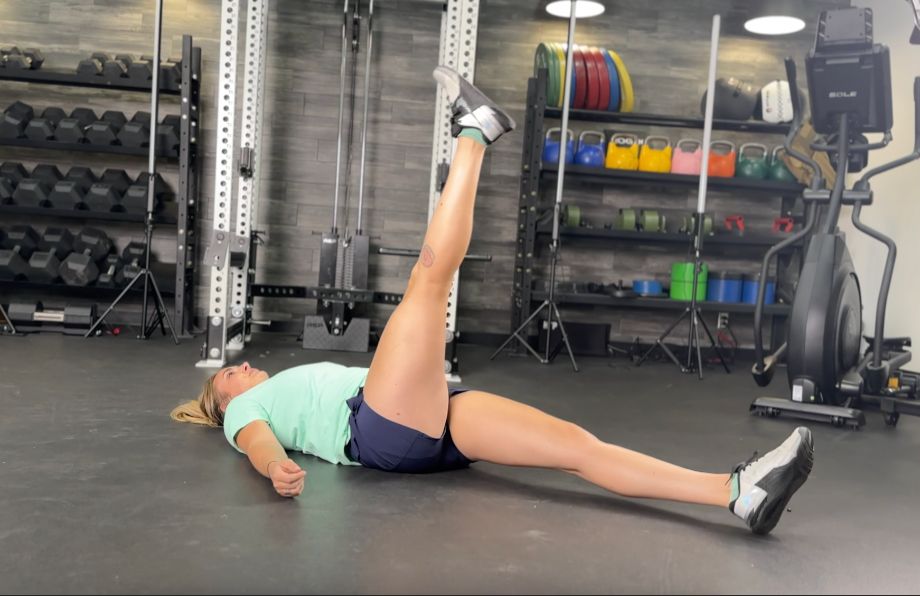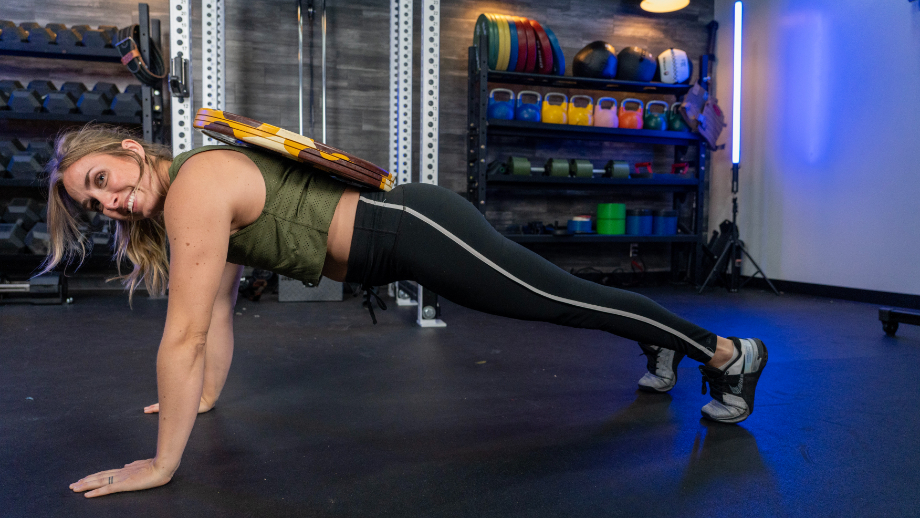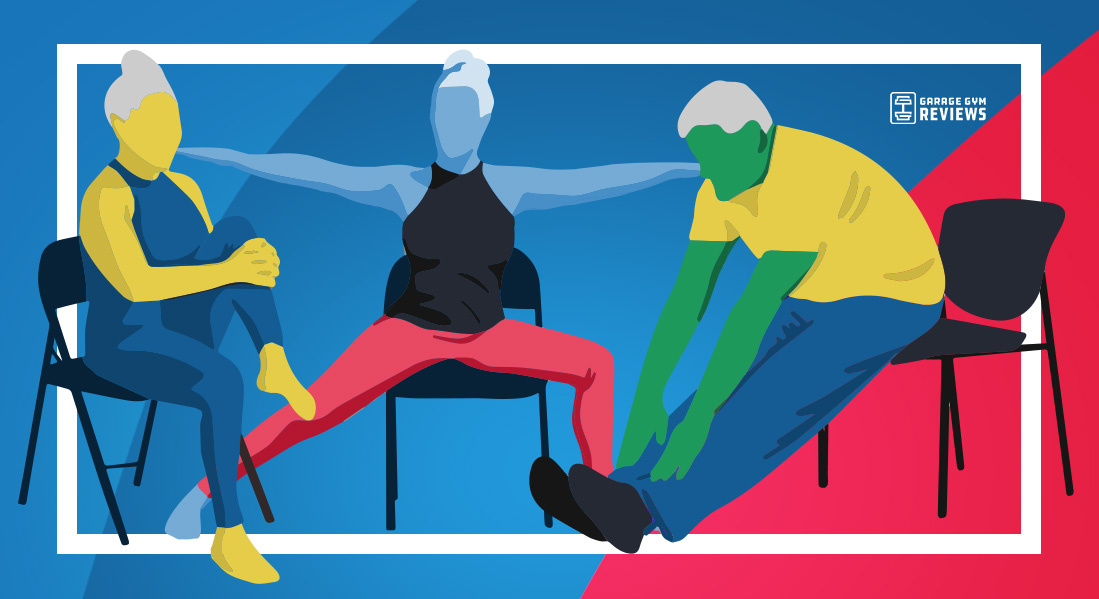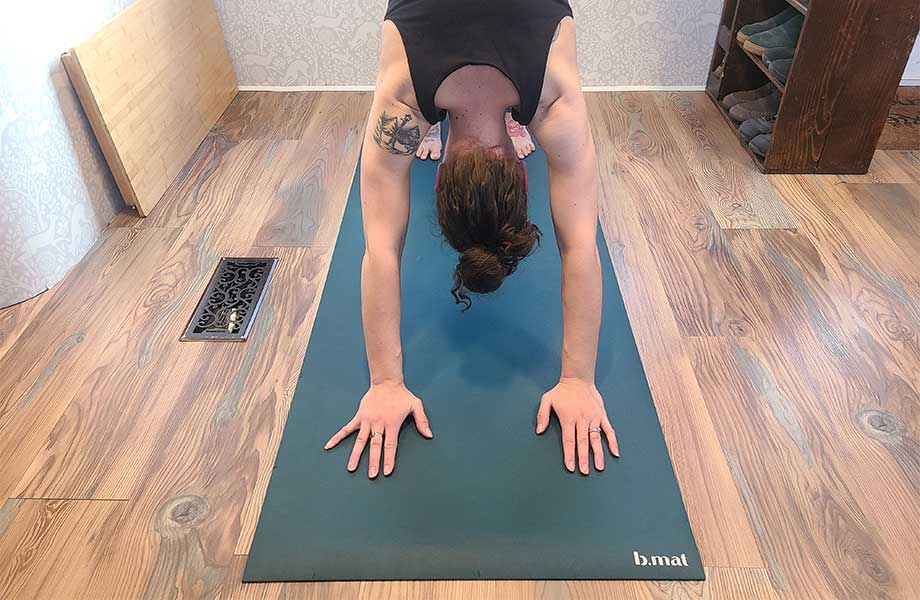Whether you’re a seasoned fitness enthusiast or a beginner on your fitness journey, Pilates will challenge and engage any fitness level for a full-body workout. Known and beloved by many for being low-impact and improving core strength and posture, Pilates requires little prior fitness knowledge, and because it uses mostly body weight to train, little to no equipment to get started.
In this guide on how to do Pilates, we’ll cover equipment basics and the benefits of a Pilates workout, then provide detailed step-by-step instructions for many foundational mat exercises to get you started on your first Pilates workout with confidence.
Let’s unleash your inner strength.
What Is Pilates?
Pilates was created in the 1920s by Joseph Pilates, who was inspired to create a physical practice that maintained full-body health. Shortly after World War I, Joseph Pilates immigrated from Germany to New York City, where he introduced his new strength training fitness techniques and the inventions—such as the Pilates Reformer—that helped him teach it. Pilates was inspired by yoga, so some movements may seem familiar if you’re a yoga practitioner.

What Equipment Do You Need To Do Pilates?
Speaking of reformers, you may have seen these complicated-looking machines used by some Pilates practitioners. While reformers can be a great tool, you don’t need this expensive, large, and intimidating piece of machinery to get started doing Pilates at home. There are many low-cost ways for beginners to try a home Pilates class with a few supplies you may already have.
Yoga Mat
Yoga mats provide cushioning and grip for any home workout where you spend time on the floor. You can also use a mat to mark where to place yourself in space by using the top right corner of your mat as a guide point for various yoga/Pilates exercises.
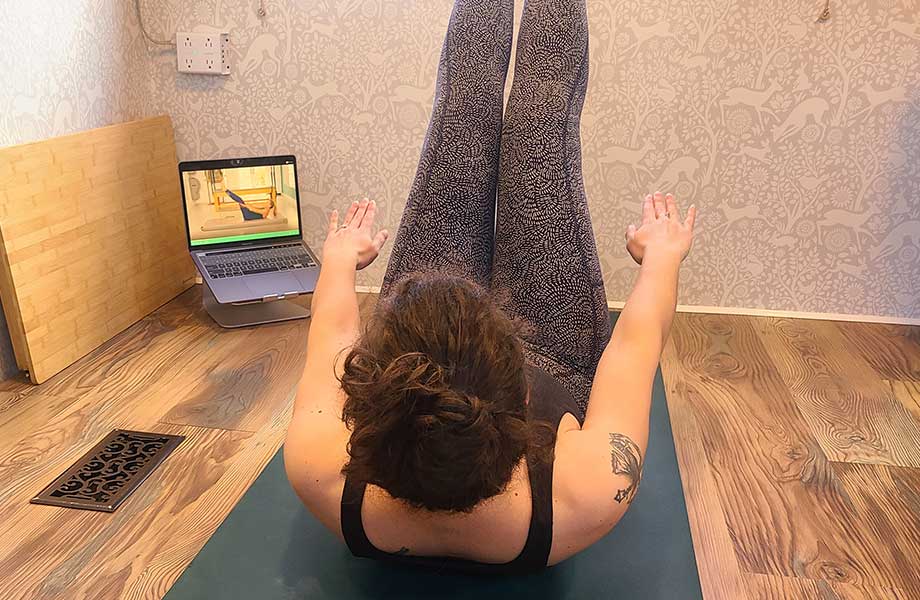
Sliders
Sliders are small circles of fabric or lightweight foam designed to decrease the resistance between your body and the floor. For example, you may begin in a high plank pose with your hands on sliders and reach one hand out and away from you while maintaining contact with the floor.
Grippy Socks
Grip socks help Pilates practitioners maintain balance. Specialized pilates socks are especially useful when doing your Pilates workout on a wooden floor or other slick surface without a yoga mat.
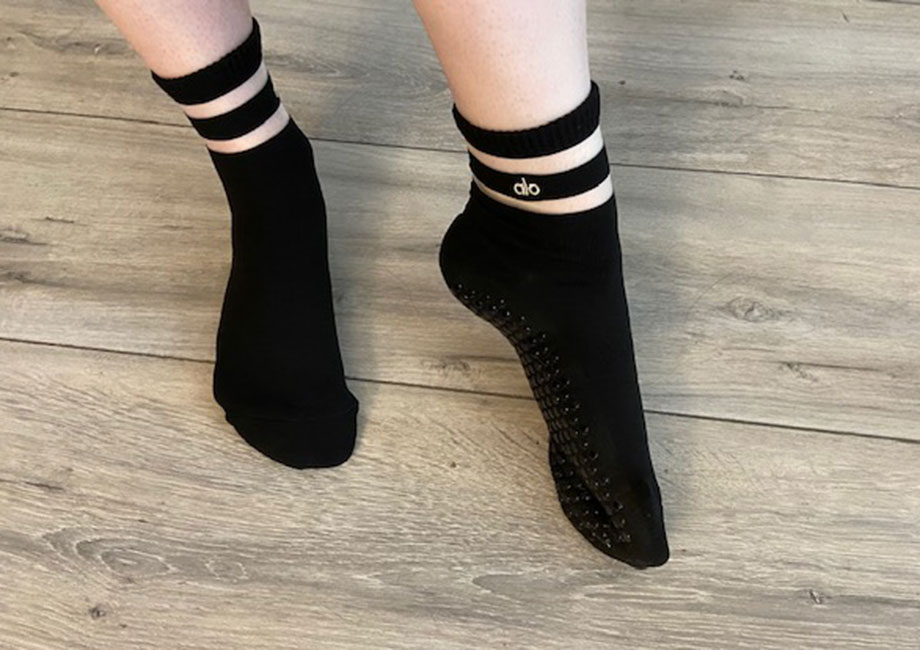
Resistance Bands
Resistance bands are rubber or latex bands of varying thickness that add resistance to bodyweight exercises. Resistance bands can also help aid in establishing proper alignment.
Lightweight Dumbbells
Like resistance bands, small dumbbells can add a little extra resistance “oomph” to your Pilates workout. You won’t be lifting heavy here—stick to between two and five pounds.
RELATED: Best Dumbbells
How Can You Prepare For a Pilates Workout?
Properly preparing is one of the best ways to set yourself up for success when trying Pilates for the first time. Ensure you’re hydrated and choose clothing you’re comfortable moving in that won’t get in the way. Yoga pants or workout leggings are great options. While Pilates includes only light cardio training, you’re still likely to work up a sweat! So, consider wearing lighter layers.
Beginner Pilates Exercises
Here are a few beginner-friendly exercises you may encounter during a Pilates class or workout. We suggest trying these six movements as an introduction to Pilates or as a warm-up.
Pelvic Tilt
Why do it: The pelvic tilt is one of the fundamentals of a Pilates warm-up. With this exercise, you’ll engage the lumbar spine to warm up your low-back muscles, an essential to injury prevention and beginning body awareness as you move into your Pilates workout. This movement may seem small, but it has a large impact.
How to do it:
- Lie on your back with the soles of your feet flat on the ground and your knees bent.
- Tilt your tailbone up toward the ceiling so your low back draws down toward the ground.
- Drop your tailbone down toward the ground so your low back arches slightly off the ground.
- Repeat the movement for at least 10 reps.
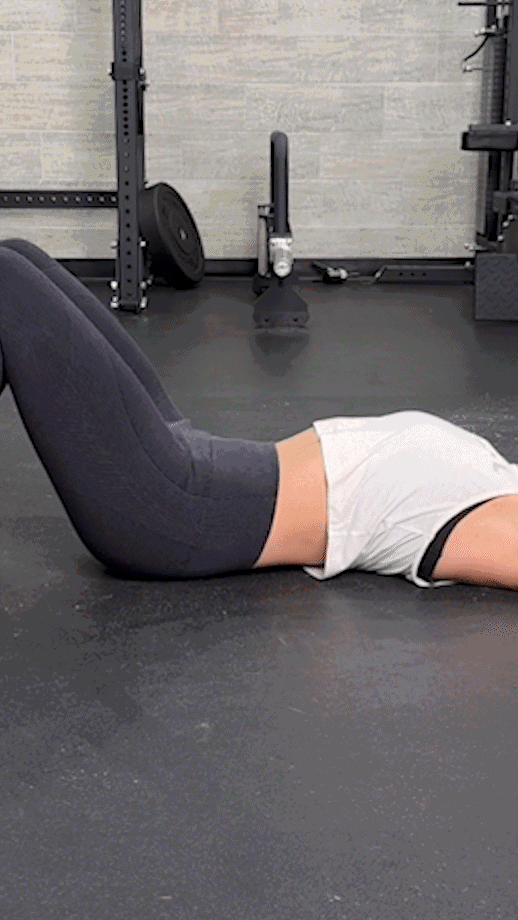
Ab Roll-Up
Why do it: Much of Pilates matches inhales and exhales with movement, and the ab roll-up is a great example. For this exercise, be sure you’re engaging your core muscles (what Joseph Pilates referred to as the “powerhouse”) and aren’t relying too much on the momentum of your arms. Exhale as you rise, inhale as you roll back down.
How to do it:
- Lie on your back with your legs lengthened and your arms reaching long over your head.
- Lift your arms up and slowly peel your head and back off from the ground, smoothly coming into a tall seated position.
- Slowly roll back down while rounding your spine until you’re once again lying flat on the ground.
- Repeat for 10 to 12 reps.
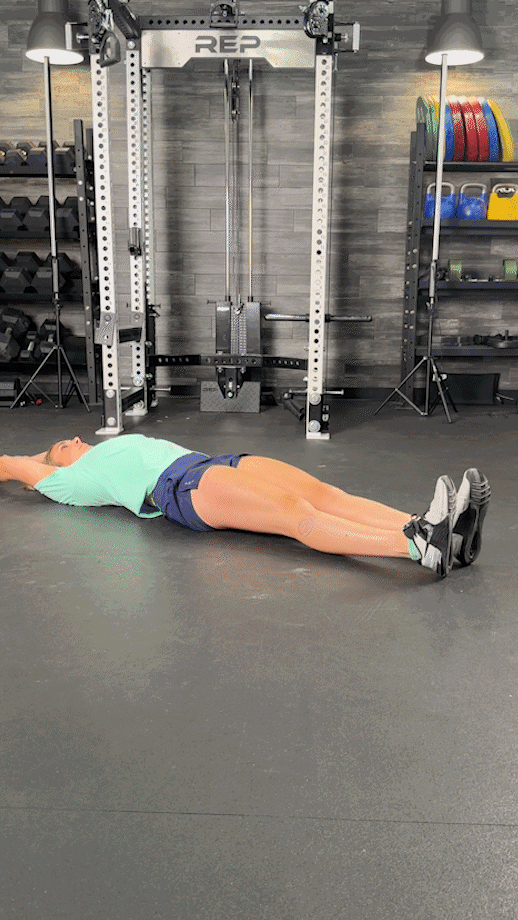
Single-Leg Circles
Why do it: Single-leg circles warm and open up your hips and stabilize your pelvis. Like many exercises in Pilates, the challenge doesn’t come from the movement itself but rather the parts of the body you’re keeping still.
The breathing pattern for this exercise is: inhale as you lower and draw the half circle, then exhale as you draw the leg back up.
How to do it:
- Lie on your back with your legs lengthened and your arms long by your sides, palms facing the ground.
- Draw your right leg in toward your chest, then straighten your leg and point your toes toward the ceiling.
- Turn your leg out by rotating your whole leg in the hip socket, so the sole of your foot is facing slightly toward the left.
- Keeping your lifted leg straight, make a half-circle by drawing it in toward your left leg and down but not all the way to the ground.
- Draw your lifted leg back up to the starting position and reach toward the ceiling.
- Repeat this half-circle motion five times, then reverse the movement.
- Gently lower your right leg back down to the mat, and then repeat with your left leg.
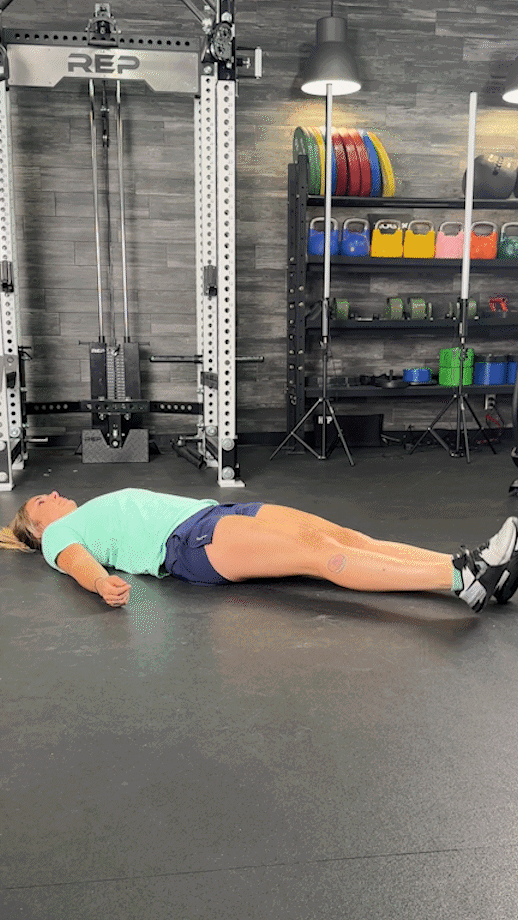
Glute Bridge
Why do it: The glute bridge strengthens the back of your legs from your hamstrings all the way up into—you guessed it—your glutes! Keep your shoulders relaxed to maintain proper form.
How to do it:
- Lie on your back with your knees bent and the soles of the feet on the ground hip-width apart. If you were to reach your arms toward your feet, your fingertips should graze your heels.
- Press into your feet to raise your hips. This doesn’t have to be as high as you can go—only high enough so you have a nice clean line from your shoulders to your knees.
- As you press into your feet, simultaneously draw them toward your glutes. Your feet won’t move at all, but will engage your hamstrings more.
- Lower your torso back down to the floor.
- Repeat for 10 to 15 reps
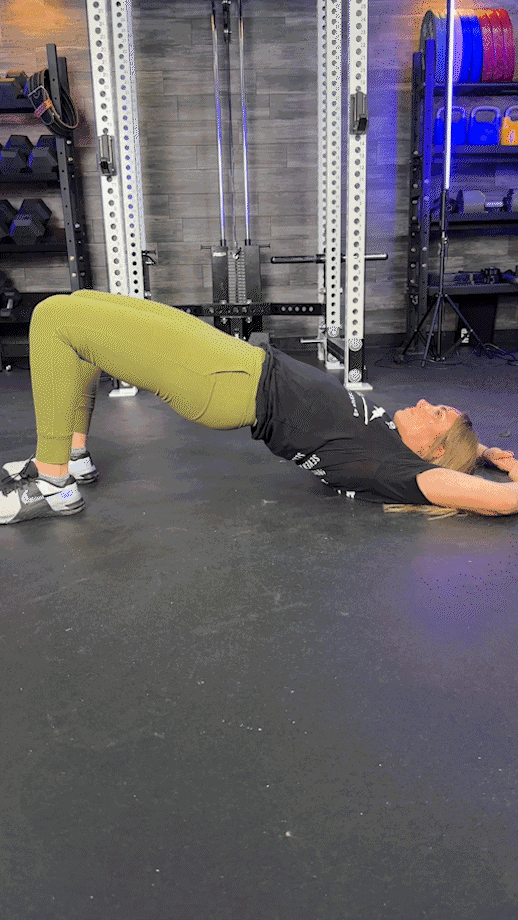
Bird Dog
Why do it: The bird dog exercise works on balance and stability, which will fire up your core muscles—particularly your obliques. As you reach opposing extremities away from each other, you’ll need to engage your powerhouse core to keep the wobbles away. Inhale as you reach away from your body, exhale as you draw your elbow and knee in.
How to do it:
- Come to your hands and knees or a “table-top” position with your knees tracking beneath your hips and your wrists beneath your shoulders.
- Reach forward with your right arm so that it’s parallel to the ground.
- Reach your left leg behind you with pointed toes so your left leg is parallel to the ground.
- You can stay here and hold this pose for time or draw your right elbow and your left knee toward each other beneath your torso until they touch, then reach your right arm forward and left leg back to their positions in Step 2 and Step 3.
- Repeat for 10 to 15 reps, then gently lower your working limbs and switch sides.
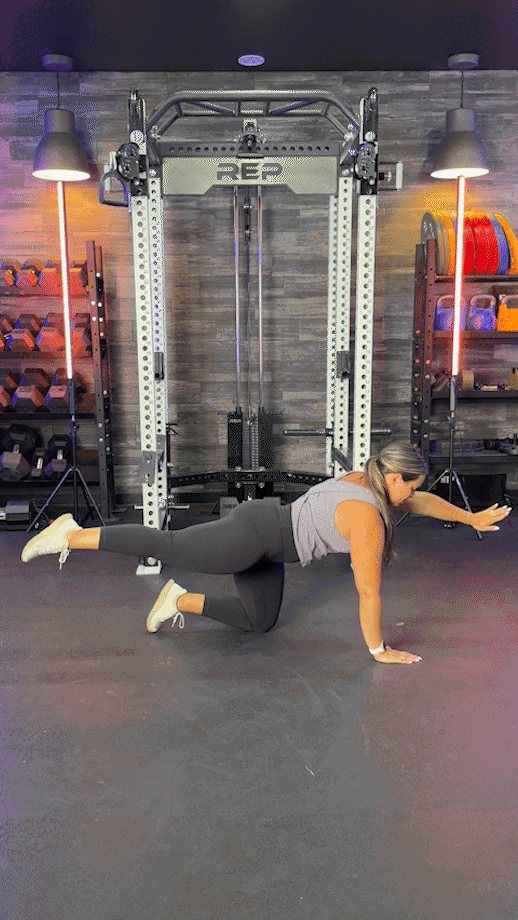
Lying Side Kicks
Why do it: Lying side kicks will work your inner thigh and outer hips while still firing up your core. The key to this exercise is to lift your waist away from the Pilates mat to keep your obliques engaged. Exhale as you lift your leg, inhale as you lower your leg.
How to do it:
- Lie on your right side, lining up your back to one long edge of your mat. Use your right arm to prop yourself up, placing your right hand behind your head. Use your left palm in front of you for stability.
- With both legs lengthened and stacked on top of each other, position your feet on the opposite side of the mat, so your legs are at a 45-degree angle to your body.
- Flex your feet and lift your top leg as high as you can without straining, then lower it back down.
- Repeat for 10 to 15 reps, then switch sides.
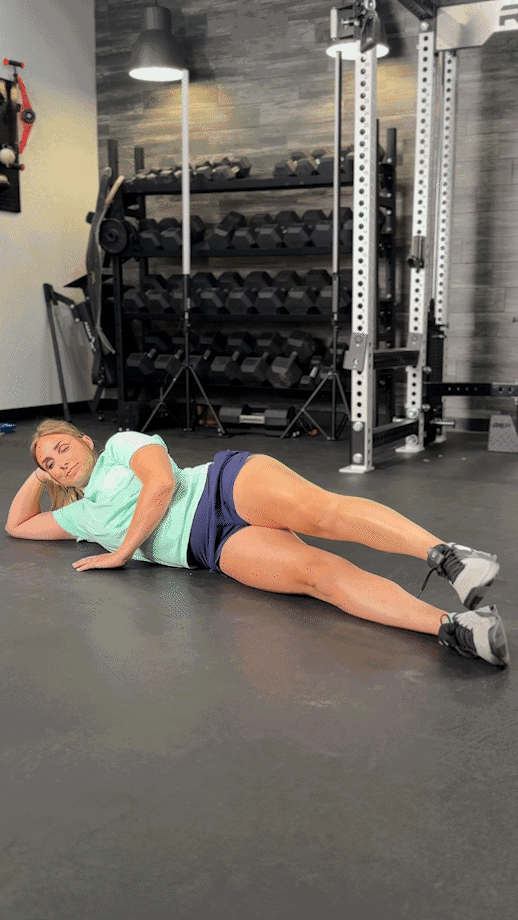
Beginner Pilates Workout
Now that you better understand a few beginner Pilates exercises, here’s a great visual tool to help you put them into practice.
| Exercise | Sets | Reps |
| Pelvic tilt | 1 | 10 |
| Ab roll-up | 1 | 10-12 |
| Single-leg circles | 1 | 5 circles forward, 5 circles backward, each side |
| Glute bridge | 1 | 10-15 |
| Bird dog | 1 | 10-15, each side |
| Lying side kicks | 1 | 10-15, each side |
What Are the Benefits of Pilates?
Pilates offers several health benefits, from improved posture to increased mobility. A regular Pilates routine may also help improve your overall health and quality of life.
Helps Enhance Core Strength
Pilates has been touted as one of the best exercise programs for abdominal muscle strength. According to an August 2022 study by the International Journal of Sports Physical Therapy1, improved core strength has been shown to help alleviate back pain, improve posture, and increase overall quality of life.
Can Help Improve Body Awareness
Because Pilates moves require so much control and precision, many beginners find they need to focus on their bodies in a way they haven’t had to in previous workouts. This awareness can translate off the Pilates mat, too. Many practitioners of Pilates experience more control and balance in their day-to-day movements, whether that means shoveling snow with more awareness, or being less likely to trip.
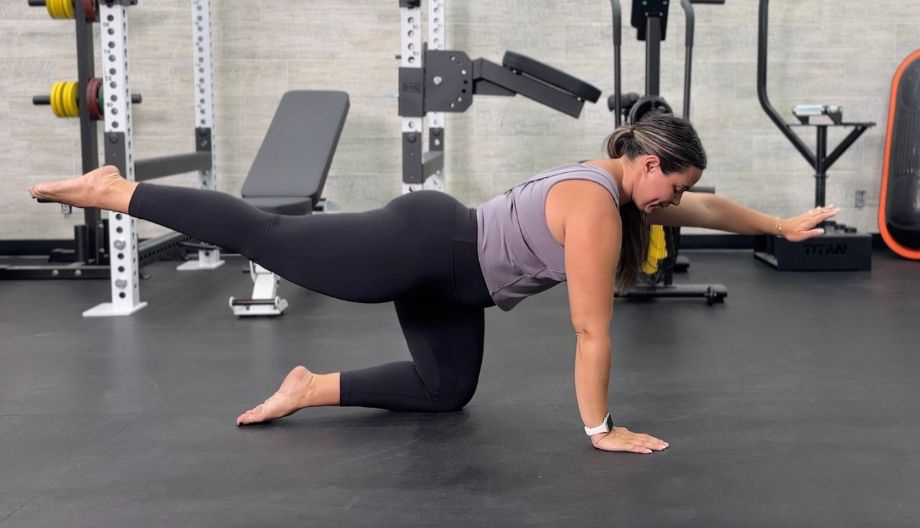
Can Help Improve Mobility
Like body awareness, the strength and flexibility you can gain from regular Pilates workouts will only help elevate your mobility (and quality of life) as you age. Pilates was even found in a 2016 controlled trial2 to be more effective in increasing flexibility in older women than a standard static stretching program.
May Help Improve Mental Health and Motivation
Endorphins—one of the four “feel-good” mood-boosting hormones—can be elevated through regular exercise, a well-known fact. Pilates, in particular, has been shown to positively affect mood in young adult males3 experiencing symptoms of general anxiety and depression. Further, non-traditional strength training like yoga and Pilates may help increase motivation4, especially if you’re new to the practice and view it as a challenge, since it’s self or intrinsically motivated and more likely to be repeated.
May Boost Athletic Performance
A 2018 study5 found that Pilates training improved 5-km run performance speeds in those who participated in a 12-week Pilates-based program. The study credits these findings to the flexibility and body awareness improvements seen from a regular Pilates practice.
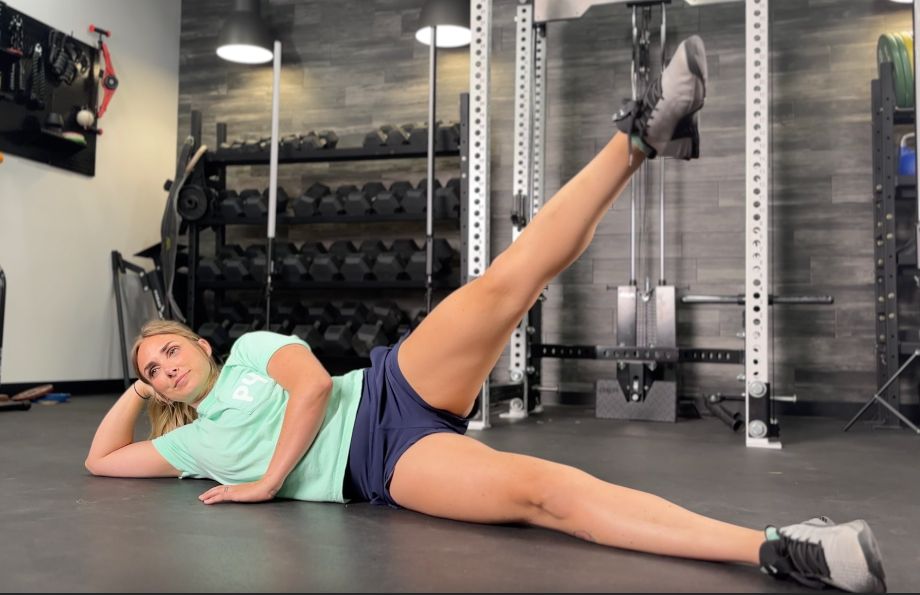
How To Do Pilates: Final Thoughts
While we call Pilates “low impact,” it can be highly effective as a full-body, strength training exercise program. Whether you’re looking to complement higher-intensity workouts like running or HIIT or exploring your options beyond yoga for a mat workout, a Pilates practice is a great way to gain strength, control, and an improved range of motion.
How To Do Pilates: FAQs
How do I start with Pilates?
Whether you sign up for a class or start in your living room with an at-home Pilates practice, the best way to start is to commit to trying and be open to a new experience. If you’ve never done Pilates before, know that it’s known for challenging even the most seasoned fitness aficionados, and it’s okay if it feels difficult! Starting with a single movement and committing to just five to ten minutes is a great place to begin. You can build up your practice from there.
What are the 6 rules of Pilates?
Also known as the “foundation of Pilates,” the six rules were developed by students of Joseph Pilates. They are concentration, control, center (core), breath, precision, and fluidity (flow).
Can I teach myself Pilates?
Of course, you can! Remember to go slow and engage with the six rules of Pilates. While you don’t need a Pilates instructor to learn it, feedback can be helpful, so you might consider trying one of the best Pilates apps. For beginners of any new physical practice, we also recommend consulting a certified personal trainer or visiting a certified Pilates instructor at a reputable Pilates studio if you decide you want to “level up” your skills.
References
- Smrcina, Z., Woelfel, S., & Burcal, C. (2022). A Systematic Review of the Effectiveness of Core Stability Exercises in Patients with Non-Specific Low Back Pain. International journal of sports physical therapy, 17(5), 766–774. https://doi.org/10.26603/001c.37251
- Oliveira LC, Oliveira RG, Pires-Oliveira DA. Comparison between static stretching and the Pilates method on the flexibility of older women. J Bodyw Mov Ther. 2016 Oct;20(4):800-806. doi: 10.1016/j.jbmt.2016.01.008. Epub 2016 Feb 3. PMID: 27814860.
- Fleming KM, Campbell M, Herring MP. Acute effects of Pilates on mood states among young adult males. Complement Ther Med. 2020 Mar;49:102313. doi: 10.1016/j.ctim.2020.102313. Epub 2020 Jan 25. PMID: 32147061.
- Petracovschi (Ionescu), Simona. (2014). Motivation in practicing Yoga & Pilates and satisfying the need for self-knowledge. Timisoara Physical Education and Rehabilitation Journal. 7. 10.1515/tperj-2015-0020.
- Finatto P, Silva ESD, Okamura AB, Almada BP, Storniolo JLL, Oliveira HB, Peyré-Tartaruga LA. Pilates training improves 5-km run performance by changing metabolic cost and muscle activity in trained runners. PLoS One. 2018 Mar 21;13(3):e0194057. doi: 10.1371/journal.pone.0194057. Erratum in: PLoS One. 2018 Apr 24;13(4):e0196509. doi: 10.1371/journal.pone.0196509. PMID: 29561907; PMCID: PMC5862462.



